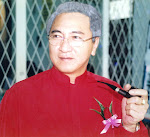
Celebrating the Easter Vigil last year at the Vatican, Pope Benedict XVI spoke of the difficulties in understanding Jesus’ resurrection. He explained that the Church assists the faithful in understanding this mysterious event through three symbols in the Easter Vigil: Light, Water and the “Alleluia.”
The Easter Vigil is celebrated on Saturday evening with the lighting of the Easter Candle in the Church. This is followed by a procession, as do the Liturgy of the Word and the baptism of catechumens.
First of all, there is light. God’s creation – which has just been proclaimed to us in the Biblical narrative – begins with the command: "Let there be light!" (Gen 1:3). Where there is light, life is born, chaos can be transformed into cosmos. In the Biblical message, light is the most immediate image of God: He is total Radiance, Life, Truth, Light.
At the Easter Vigil, the Church represents the mystery of the light of Christ in the sign of the Paschal candle, whose flame is both light and heat. The symbolism of light is connected with that of fire: radiance and heat, radiance and the transforming energy contained in the fire – truth and love go together. The Paschal candle burns, and is thereby consumed: Cross and resurrection are inseparable. From the Cross, from the Son’s self-giving, light is born, true radiance comes into the world. From the Paschal candle we all light our own candles, especially the newly baptized, for whom the light of Christ enters deeply into their hearts in this Sacrament.
The second symbol of the Easter Vigil – the night of Baptism – is water. It appears in Sacred Scripture, and hence also in the inner structure of the Sacrament of Baptism, with two opposed meanings. On the one hand there is the sea, which appears as a force antagonistic to life on earth, continually threatening it; yet God has placed a limit upon it. Hence the book of Revelation says that in God’s new world, the sea will be no more (cf. 21:1). It is the element of death. And so it becomes the symbolic representation of Jesus’ death on the Cross: Christ descended into the sea, into the waters of death, as Israel did into the Red Sea. Having risen from death, he gives us life. This means that Baptism is not only a cleansing, but a new birth: with Christ we, as it were, descend into the sea of death, so as to rise up again as new creatures.
The third great symbol of the Easter Vigil is something rather different; it has to do with man himself. It is the singing of the new song – the alleluia. When a person experiences great joy, he cannot keep it to himself. He has to express it, to pass it on. But what happens when a person is touched by the light of the resurrection, and thus comes into contact with Life itself, with Truth and Love? He cannot merely speak about it. Speech is no longer adequate. He has to sing.
This year, the Holy Father, Pope Benedict XVI reminded that Christians, like Christ, do not “conquer” through the sword, but through the Cross.
It is at this Mass that the church welcomes new Catholics.
For those of us who have been baptized, let us remember St. Paul’s words in the second reading for this Sunday:
"If you have been raised with Christ, seek the things that are above, where Christ is, seated at the right hand of God. Set your minds on things that are above, not on things that are on earth. For you have died, and your life is hidden with Christ in God. When Christ who is our life appears, then you also will appear with him in glory" (Col 3:1-4).
Update: In Part 1 of this series, I mentioned that, “Families are encouraged to attend all three liturgies to experience the whole thing like a three-part movie.”
‘The third-part movie’ consists of two sub-parts, i.e., Easter Vigil (Holy Saturday) and Easter Sunday liturgies.
Contrary to the belief of some Christians that, if one has already attended the Easter Vigil on Saturday, there is no longer need to attend the following Easter Sunday Mass, or vice versa. Easter Vigil is NOT considered as the usual sunset mass. It is therefore equally important to attend both Saturday (Easter Vigil) and Easter Sunday Mass, otherwise The Sacred Easter Triduum is rendered incomplete. Source: Stella Maris Church announcement during last Holy Thursday Mass.
“The Lord is Risen, Alleluia”. Happy Easter to all my readers.
Tomorrow’s Posting: Easter Sunday: Not just another day (Pt. 5)


.jpg)




No comments:
Post a Comment